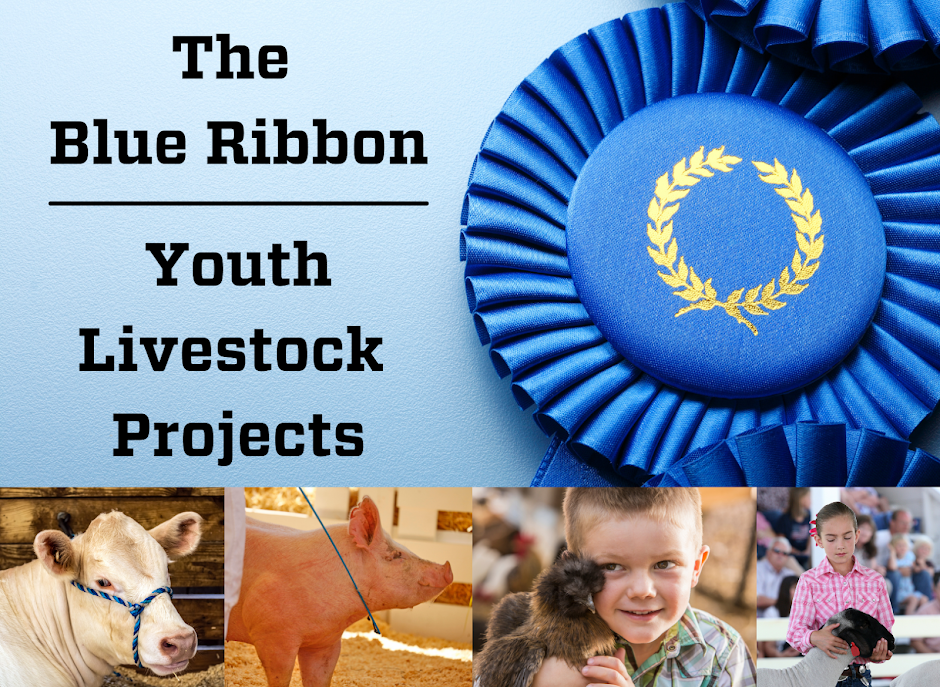Of all the pieces of equipment, the ones that should be used and paid the most attention are the humble scales. That's right, the scales can tell us more about how your livestock project is doing than any other piece of equipment. Sure you may think halters, grooming equipment and other pieces of tack can make a big difference in your project, but a scale never lies about what is going on with your project.
There are two scales every livestock project should have available: scales for livestock and scales for feed. I am not saying you need to spend a lot of money and everybody needs to own these scales, but you should find a set you can use or borrow. Livestock scales may be a community or group asset. They might be available at your county fairgrounds, sale barn, feed store, 4-H club or FFA Chapter. You do not need to use livestock scales everyday, but once a week, every two weeks or monthly can provide you valuable information about how your animal is gaining (or not).
Small feed scales will help you track your inputs. You might use these every time you start building your feed ration for a single feeding. I would advise you to use the scales at least every time you make a change in your feed amounts. They are most important when you start mixing feed with additives and supplements. You may build a much larger ration than you thought without scales.
So why are scales important beyond just giving you a weight for your animal or feed ration? The information from these scales can be used to formulate important data to help in your management of your livestock project. Here are some examples
Ration Amounts
For most livestock, a proper amount of ration is 3% to 5% of their body weight. If you weigh your pig and her weight is 150 lbs. and you need to feed 3% of her weight per day, then do the math:
(150 lbs. X 3% ) ➗ 100 = 4.5 lbs. of feed per day
This means if you feed twice (2) times a day you need to get your feed scales and weigh out 2.25lbs of feed for each ration. This way you will feed her 2.25 lbs. in the morning and 2.25 lbs. in the evening for a total of 4.5 lbs. per day.
Rate of Gain
A rate of gain is the daily average of weight gained by your animal over a period of time. This can vary as an animal grows. At steer nominations for your county fair, your steer weighs 850 lbs. You want your steer to weigh 1375 lbs. at the fair in 150 days. What is your desired rate of gain? Let's do the math:
(Desired weight 1375 lbs. - Starting weight, 850 lbs.) ➗ 150 days = 3.5 lbs. per day
Now you know your desired rate of gain, you could weigh your steer every 30 days to see how they are doing.
Day 30 Weighed 935 lbs.
Rate of gain = (935 lbs. - 850 lbs.) ➗ 30 days = 2.8 lbs. per day
Day 60 Weighed 1023 lbs.
Rate of gain = (1023 lbs. - 935 lbs.) ➗ 30 days = 2.9 lbs. per day
Day 90 Weighed 1128 lbs.
Rate of gain = (1128 lbs. - 1023 lbs.) ➗ 30 days = 3.5 lbs. per day
Day 120 Weighed 1242 lbs.
Rate of gain = (1242 lbs. - 1128 lbs.) ➗ 30 days = 3.8 lbs. per day
Day 150 Weighed 1370 lbs.
Rate of gain = (1370 lbs. - 1242 lbs.) ➗ 30 days = 4.3 lbs. per day
Total Rate of Gain (1370 lbs. - 850 lbs.) ➗ 150 days = 3.46 lbs. per day
Administering Medication
Your sheep is sick and the vet gives you medication. You should give it at a rate of 2cc per 50lbs. of body weight each day for 5 days. How much should you be giving? Do the math.
(Sheep weighed 150 lbs. ➗ 50 lbs.) X 2cc of medication = 6cc of medication per day
Knowing weights is an important part of the proper management of a livestock project. With the weights you can formulate other data. Without using scales, all you can do is guess and wait to be surprised at the end result.
Scott Stinnett
Extension Associate
Kit Carson County
Golden Plains Area
Colorado State University Extension
